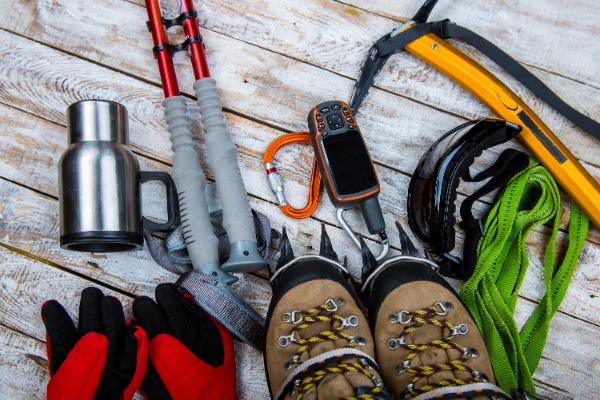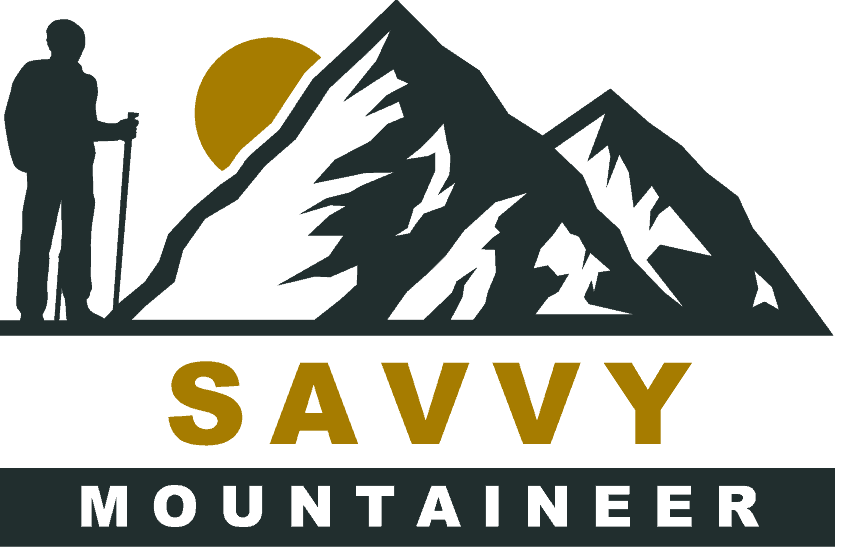Complete Rock Climbing Checklist: Essential Gear Guide 2023

Creating a rock climbing checklist can be an uphill task.
You see, when it’s time to gear up for the climb, their #1 challenge is…
Building that perfect rock climbing backpack checklist.
They’re using expensive gear and often clueless about what goes into it. This is what separates the novice climber from the veteran mountaineer. But if you don’t know how to assemble your gear effectively, you’ll never scale those heights safely and confidently.
Making a comprehensive list isn’t easy folks.
Consider one aspiring climber who told me they packed everything but forgot their helmet on their first outdoor climb… It was a scary experience they wouldn’t want anyone else to go through!
The fear of missing out essential items now makes the climbers prefer them nervous every time they prepare for another ascent.
I get it!
But here’s some truth…
rock climbing checklist,, he simply won’t.Essential Rock Climbing Gear
The initial move for a triumphant outdoor rock climbing first experience is to make sure you have the necessary equipment.
From your shoes to your chalk bag, every piece plays an integral role in ensuring safety and enhancing performance.
Table of Contents
Importance and Selection of Climbing Shoes
Climbing shoes are arguably the most crucial part of any climber’s kit. A pair of shoes that offers comfort without compromising on grip or durability can significantly impact how you tackle those challenging ascents.
Role of Chalk Bag and Chalk in Rock Climbing
Your hands tend to sweat when you’re pushing physical boundaries – this is where chalk bags come into play. Chalking up provides better friction between your hand and holds, reducing slippage risk while increasing hold time.
The Need for Crash Pad in Outdoor Climbing
If bouldering outdoors gets your adrenaline pumping, then crash pads should be high on your list. These padded mats protect climbers from potential falls by absorbing shock during landing.
Inclusion Of Approach Shoes In Your Kit List
There we have it – essentials needed to embark on a thrilling journey towards peaks unknown. Next, let’s delve deeper into advanced equipment required to scale higher off the ground and venture into more challenging terrains like multi-pitch routes and trad climbs.
Advanced Rock Climbing Equipment
For the serious climber, advanced rock and ice climbing clothing and equipment is essential for taking their skills to the next level.
From harnesses and belay devices to ropes and helmets, these tools can take your climbs from ordinary to extraordinary.
Choosing the Right Harness for Your Climb
A rock climbing harness, often overlooked but a critical piece of equipment that connects you with the rope.
Your choice should be based on comfort, weight distribution capabilities, and durability.
Understanding Belay Devices
Belay devices control a rope during belaying – they create friction that helps hold or lower climbers safely.
This presents an insightful overview about different types of belay devices available today.
Selecting an Appropriate Rope Length
The length of your rock climbing rope matters significantly depending upon the type of climb (single-pitch or multi-pitch) as well as the terrain difficulty level.
Helmets – A Key Safety Measure
In addition to protecting against falls, helmets are also crucial for shielding from falling debris while outdoors. Check out our guide on how to choose a climbing helmet.
Climb Higher With Quickdraws
Quickdraws consist of two non-locking carabiners connected by a short sling used to clip onto protection points along the route, making it easier most climbers to ascend without worrying about carrying an excessive amount of loose hardware.
Remember, the goal here isn’t just to get to the top of the mountains it’s to do so as efficiently as possible. This is where having the right set of quickdraws comes in handy.
In a nutshell, understanding each component and its role is essential not only for enhancing performance and safety measures but also for ensuring a successful and thrilling experience every time you step out to conquer a new peak.
Specialized Gear for Boulderers & Sport Climbers
For boulderers and sport climbers, certain gear can help ensure a safe and efficient climb.
Backpack Essentials for Boulderers
Bouldering is all about minimalism and mobility. You need to be able to move freely on the rock face without being weighed down by unnecessary equipment. A lightweight backpack, therefore, becomes an essential part of any boulderer’s kit.
Cams – A Necessity for Sport Climbers
Sport climbing often involves ascending high vertical faces climbing areas where safety is paramount. Cams (or Camming devices) provide temporary anchor points in rock cracks. They expand under load, gripping the sides of the crack securely so you can clip your rope into them. Brands like Black Diamond or Metolius offer excellent performance across a range of crack sizes.
Utilizing Nuts & Nut Tools Effectively
Nuts are another form of removable protection used in traditional (“trad”) climbing. They’re small metal wedges threaded onto wires which get jammed into constrictions in rocks providing secure anchor points. Nut tools, on the other hand, assist experienced climbers in removing these nuts after they have served their purpose. Whether it’s placing nuts correctly during ascent or removing them safely post descent, both require skillful handling.
As we delve deeper into specialized gear required while hiking boots venturing out on rocky terrains, one realizes how each piece aid kit contributes towards ensuring not just success but also safety during such expeditions. Now let’s look at some optional items enhancing convenience as well as security measures when embarking upon our next adventure – Heading 4 awaits.
Optional Items Enhancing Safety & Convenience
If you’re a rock climbing enthusiast, there are certain optional items that can significantly enhance your safety and convenience during adventures.
Follower Packs – Utility During Multi-Pitch Routes
A follower pack, though not mandatory, is highly beneficial on multi-pitch routes.
This compact bag allows climbers to carry more gear or essentials like water or snacks without impeding their progress up the wall.
Personal Anchor Systems Explained
The use of Personal Anchor Systems (PAS) has gained popularity among seasoned climbers for its versatility and ease of use.
REI Co-op’s PAS, in particular, offers exceptional durability while securing you to anchors during belaying or rappelling activities.
Additional Security with Anchor Supplies
Beyond harnesses and ropes, personal anchor system and supplies provide an extra layer of security when building protection points at crags.
Anchors help distribute weight evenly across multiple points reducing risk factors associated with potential falls.
Extras And Personal Items To Consider
Climbing is more than just the climbing helmet and all the gear and equipment.
The right extras can make your climbing experience smoother, safer, and even more enjoyable.
Value Addition With Extra Accessories
Rope Bags/Tarps:
A rope, sleeping bag, or tarp isn’t a necessity but it’s an accessory that adds significant value to any climber’s kit.
Besides keeping your rope clean and untangled, they also help in extending its lifespan by protecting it from dirt, moisture, UV rays, etc.
Ikea Shopping Bag:
Believe it or not, Ikea shopping bags are quite popular among climbers. They’re lightweight yet sturdy enough to carry heavy loads of gear without tearing apart.
While some might argue against them due to their impact on sensitivity while climbing partners handling ropes, gloves do offer protection for hands during rappelling or belaying.
Kneepads aren’t necessary for all types of hard climbs though, but when you’re dealing with rough terrains where knee bars are common, these could be lifesavers.
FAQs in Relation to Rock Climbing Checklist
What should I prepare for rock climbing?
Prepare by ensuring you have the essential gear such as climbing shoes, chalk bag, crash pad and your climbing harnesses. For advanced climbs, additional equipment like ropes, helmets and quickdraws are necessary.
How do I prepare for my first rock climbing?
For your first climb, start with basic gear like comfortable climbing shoes and a used climbing chalk and bag. Learn about safety measures while climbing career including how to use a harness and belay device properly.
How do you mentally prepare for rock climbing?
Mental preparation involves understanding the risks involved in rock climbing. Practice visualization techniques to anticipate challenges on the route. Confidence building through training also helps in mental preparation.
How to rock climb safely?
Safety is paramount when Rock Climbing. Always check your Gear before starting, wear a Helmet, know how to use Belay Devices correctly, and never Climb alone, also check when to retire your gears. Regular Training can also help improve Safety.
Conclusion
Scaling the heights of rock climbing is a thrilling journey.
Your adventure begins with essential gear like shoes, chalk bags, and a few crash pads too.
Diving deeper, you’ve learned about advanced equipment such as harnesses, ropes, and quickdraws.
Boulderers and sport climbers have their own unique needs met by specialized gear like backpacks or cams.
Optional items enhance safety measures while adding convenience to your climb.
All these elements form an integral part of your comprehensive rock climbing checklist.
The mountains are calling!
Savvy Mountaineer, your #1 stop resource for mountain adventures awaits! Gear up using our detailed checklists, explore tips & tricks for successful ascents, and embark on your next thrilling expedition today.


Deeba & Matt
About the Authors
Intrepid content creators and relentless hiking enthusiasts. With a passion for travel and adventure, Matt & Deeba are never one to shy away from a daring challenge.
